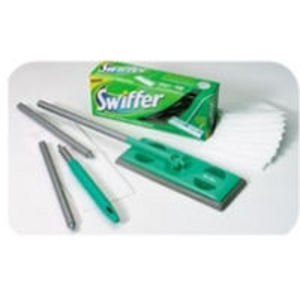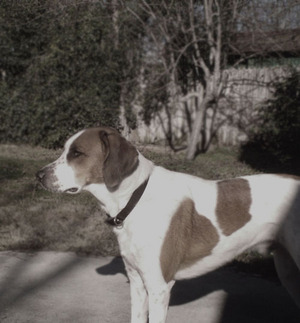I hope you will not have to cross this bridge, because it is a very messy one! If, however, you find yourself (like me) with an older dog who seems to view doing his (or her) business outside as about as charming as having to use a dirty old outhouse, then you have my sympathy. I may be able to offer a few suggestions that have not occurred to you yet.
For starters, let me fill you in on how I came to be in this situation. A dear elderly friend of mine had an older Silky Terrier named Sam. The dog was beautifully trained. He did all his ‘business’ on a fresh towel placed on the floor. The towel was removed (as needed) and a clean one would be put down in its place.
My elderly friend wanted another dog. She was becoming disabled, and she felt that another dog would add tremendously to her life (As I wasn’t in a position to exert much influence, it is best to leave judgment regarding the wisdom of that opinion to one side for now). She brought two different larger breed puppies home at different times, but ran into too many problems, one of which was that she and her ever-present cane were easily tipped over by a big, energetic pup.
Finally, she settled on a very small Yorkshire Terrier puppy and named him Tiger, “to build him up.” she said. Sam promptly bit the newcomer on the nose-hard! Tiger sports a permanent scar from that encounter.
Over time, Tiger grew, and grew, until he became as large as the Sam, Silky Terrier!. You may have noticed that dogs don’t like to all do their business in the same place. Tiger didn’t want to share Sam’s potty towel. Tiger’s elderly mama was not feeling as perky as she had been when Sam was a pup. She was afraid to let Tiger outside-afraid that he’d escape and be run over by a car. As a matter of fact, Tiger DID get out a few times, and nearly gave her a heart attack as he ran gaily down the middle of a busy street.
Since Tiger was confined to the house, he learned the joys of aiming at a recliner or a spot on the rug and he refined his technique over the years. He was quick, sneaky and accurate.
Fast forward eight years. Tiger’s elderly mama passed away, and Tiger was taken to the Humane Society. We stopped by right after her funeral to drop off an adoption form (thank heavens our Humane Society has the forms available on-line).
Later that afternoon we got a call to say that we could come back and talk about adopting the little guy, who it turned out, was sick and grieving. The so-called ‘friend’ who had stayed with Tiger and his mama (and who subsequently took off with everything which wasn’t red hot or nailed down) apparently had starved them both. Tiger couldn’t even walk without falling over! He had been an energetic little dog, so full of elastic bounce, that I had dubbed him ‘The Flea.’
Before we go much further, I’d like to put your mind at rest by mentioning that over the months, with love and good food, Tiger has regained his bounce. He is now a strong and healthy boy once again.
BELLY BANDS
So I had to figure out how to keep my carpets and vertical surfaces from being urinated on, yet take care of a sick and grieving little dog and not do further emotional damage. He’d suffered enough! The answer was to take the little dog outside often and make ‘belly bands’ for him. A sweet friend, on the other side of the country, had sent me two when our male Pomeranian was a little guy. Once I saw those, I could figure out how to make more-about two and a half inches wide for a small dog, and longer than the circumference of the dog so the ends can overlap, and doubled so there is enough fabric to take up ‘oopses’ and not leak much.
It is absolutely IMPERATIVE that a dog who is wearing a belly band be able to go outside often. Otherwise, the bellyband becomes useless and cruel. If a dog cannot piddle when it feels the urge, it will learn to piddle with the belly band on. In that case, what choice have you given the dog?!
Tiger ‘peed in his pants’ a lot. We had multiple ‘oopses’ each and every day, as he attempted to mark boxes, furniture, my ironing board, etc. This little dog did NOT want to have to go outside to do his business! He’d done it inside perfectly happily, thank you very much, for eight years now, and didn’t feel the slightest need to change his ways. Our washer was kept busy, laundering all those belly bands.
I work at home, so I was able to take Tiger outside every hour. When he became more reliable in the house, because he was pretty much down to fumes, then I was able to stretch it to every two hours during the day and evening.
We’d go along with a week or two of success, then Tiger would go back to his old habits. He was very fond of marking just about anything upright including the base of my ironing board which was leaning up against the bedroom wall (what a mess!).
After five months of belly bands, and gradually extended periods between walks, it became evident that this little dog hates going to the bathroom in the cold, wind, rain, snow…anything except the sort of weather which they enjoy in Southern California and sunny Australia. Believe me, folks, we don’ t live in either of those locations. Our part of Oregon gets cold and wet in the spring, fall and winter. That’s two-thirds of the year. When I’d implore Tiger to pick a spot’ (our code words for ‘hurry up and GO’) he’d just suck things up even tighter, in an unhappy sort of way while the cold wind howled around us.
Lest anyone conclude that we took the dog outside without a sweater or coat, I should add that this little dog has to have a sweater or a coat on outside during cold weather because his light, silky hair doesn’t keep him very warm. He often has a light weight sweater on in the house also.The dog’s anatomy is such that we have to work at arranging his coat or sweater so that he does not end up wetting on the underside of it. One of these days I’ll design a dog coat for him with a removable Velcro panel underneath so he can have a warm underside when we go on walks (AFTER he appears to have drained the tank!).
Keep An Eye On Them
The only solution which works 100% of the time for Tiger is to put a six foot nylon leash on him, and keep an eye on him. Right now he is sitting on a chair in my office, right next to me. The leash is tied loosely to the back of the chair. It is long enough that if he jumps down, he cannot strangle himself, and I’m a foot away. When I get up, he gets up. We are tied together, Tiger and I. He knows full well that he is not supposed to do his business indoors. As long as I am near by, he is quite reliable.
Confine Them When You’re Not Around
When I shower, Tiger is in his snug sleeping crate. Oh, by the way, he piddled on my bed’s comforter, not once, but three times in one week! I had a heck of a time keeping enough bedding on the bed – this was in the winter. Apparently, while he is reluctant to piddle in his own bed, he is perfectly happy to do it in mine!
Tiger is tied to the stove (when it isn’t on, of course) when I’m in the kitchen and that gives him the chance to get a drink of water. Fortunately for Tiger, I’m in and out of the kitchen often, as I’m doing The Zone Diet. You don’t go too long without eating on that one! He is tied to the piano leg when I am walking on the treadmill in the living room. Tiger has a ‘day bed’ under the piano bench, so he can curl up in a snug little nest.
Big Dogs Have A Bigger ‘Tank’
I’ve had quite a few larger breed dogs, and they all made it through the day pretty well. These little dogs (Pomeranians, and the Yorkie) feel nature’s call considerably more often. The small Poodle has demonstrated her ability to “hold it” all day (and then some), when necessary. We try not to ask her to do that very often though.
The larger dogs who have shared my life over the years (Dalmatians and a Standard Poodle) managed fairly well with my work schedule. I would go home at lunch time to let the dog out and give it some attention, before heading back to work again. The break was nice for both of us.
These little dogs think they were put on the earth solely to be a human being’s closest companion! The little female Pom just lives to snuggle in our arms! I can see why so many retired people have little dogs. They can give a little dog the extended close time together which so many little dogs need, and the little dogs fit better in apartments , condos, RV’s and smaller living quarters.
Little dogs are built to be able to be sneaky when they choose to be! They are so close to the ground, that you don’t see them doing their business in the house. They can completely disappear behind chairs, sofas, and the dining room table.
Go Out With Your Dog – Take It On Walks
We’ve gone back to walking all four of the dogs (Tiger included) every two hours, and Tiger is watched pretty closely. He will not make a mistake in the house if we are near by. Like many dogs, he does not care to foul his bed, including the ‘day bed’ under the piano bench. As long as he is confined to a small area on a short leash, and gets outside often, we’re successful.
Marking
I think some of the ‘oopses” were actually marking something, rather than a strong need to relieve himself. Tiger was telling the other dogs that although he was a relative newcomer to the household, he was claiming some things in the house. If we didn’t keep an eye on him, I think he’d have continued to assert himself in this way. It’s sort of a dog version of the World War II “Kilroy was here” graffiti. He says, “Tiger was here!” Yeah, and don’t I know it! That old, heavy-duty plywood and metal ironing board with its many layers of blanket, sheet coverings and top cover was a real chore to clean up!
We don’t have a backyard, so all the dogs are taken outside on leashes every time they need to ‘go'” It is harder for a dog to figure out how to make its needs known when they can’t just walk over to a door and whine or scratch.
Non-housebroken dogs also often find it a little confusing if they have to go through multiple doors (such as a family room door to a garage, then out a garage door) to get to the backyard and their bathroom area.
Most dogs will learn to go outside, if they are taken out so much that they don’t have any ammunition left to spend indoors. It takes a while though – some are not fast learners. We noticed that the male Pomeranian tanked up and squirted everything in sight when he was ‘intact.’ As a matter of fact, he was fond of marking things in the house, even though he knew it led to unpleasantness. Once he was neutered, at age three and a half, his need to piddle on everything ceased, and he gained greater bladder control (go figure) so that he was FINALLY housebroken. At age four, he is very good about letting us know when nature is calling.
The fastest learner in the bunch was the little female Pomeranian. She actually will squat on command! We walk outside, she is told to “find a spot” and she hits the dirt! Literally. Little puddle, mission accomplished. Now, if we could only get that across to Tiger!
To recap, we’ve tried belly bands (which I sewed out of stretchy terrycloth material, with Velcro on the ends) to ‘cover “the subject.’ In the end, I dispensed with belly bands in favor of keeping a close eye on Tiger. The other dogs graduated from belly bands to good behavior.
We now take all the dogs outside every 2 hours of the day and evening, and our ‘bathroom delinquent’ of the bunch, Tiger, is either tied to a specific area when I’m busy, or else he sits with me when I’m working. He’s never left to wander the house by himself (shudder).
Tiger is confined to his crate (with a nice comfy pillow and a small soft bathroom mat) for sleep.
If you are struggling to housebreak a dog, it can be done. Most dogs just need to be watched (or confined if they are alone, as they don’t like to mess in their beds). If a dog just got a drink, you can bet that it is going to get the urge after a while. Like little kids, you don’t want the dog to take a long drink right before crate time! However depriving a dog of water is cruel and unhealthy. It is better to let a dog wet his whistle and get a little water if it is not a good time for a big drink, but also have a set schedule which includes times when the dog can drink all the water that he wants, and can get outside to relieve himself afterwards.
Dogs are sociable critters – in nature they live together in packs. Your dog wants to be with you! The more time you devote to the dog, particularly to walking it outside, the sooner the dog will learn the joys of going for walks, pleasing you, and taking care of business. And, like with kids, I’ve noticed that the more time and attention you put into your dog, the more you get back as well!




